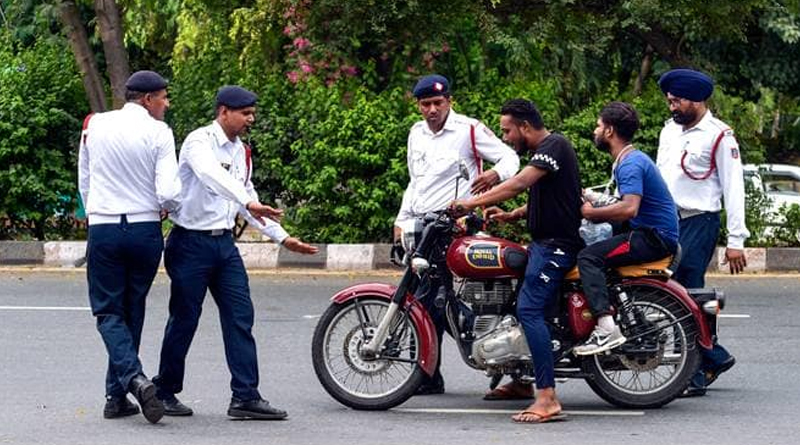The Modi government recently amended the Motor Vehicles Act, sharply increasing (up to 10 times) penalties for traffic offences to try and halve deaths and injuries from road accidents by 2020. India has among the worst road accident records in the world, with 1,50,785 deaths in 2016 — 12% of the global total. Between 2005 and 2015, India’s road network grew by 44%, registered vehicles by 123% and road accidents by 54%. This is a monumental tragedy.
The actual issue of road rules and implementation falls under the jurisdiction of state governments, which can amend central guidelines at will. The new central rules have elicited widespread public protests that the high fines are draconian and unaffordable. Parents who let a minor child drive a car can be fined Rs 25,000. In response to the protests, many state governments have slashed the proposed fines. Gujarat, the home state of Prime Minister Narendra Modi, has cut the proposed fines by 25-90%.
Many analysts have lauded the central government and criticised the states, saying “tough love” is badly needed to improve road safety. True, fines must be high enough to bite. But that will not suffice. Public attitudes towards government rules and traffic casualties are so cavalier and callous that merely raising fines will achieve little. Probably policemen will simply extract higher bribes to let off traffic offenders.
We need a sustained public education campaign to sensitise people to the terrible tragedy entailed by every road death. Today, people get angry if a top businessman or film star gets away with killing people by reckless driving. That anger needs to extend to every killer and every death. This cannot be done just by high fines or government slogans — civil society groups will have to be part of the campaign.
The limitations of regulations in ensuring safety are exposed in a Harvard University study by Bertrand, Djankov Hanna and Mullainathan titled ‘Obtaining a Driver’s Licence in India: An Experimental Approach to Studying Corruption’. The researchers persuaded 822 people queueing up outside road transport offices in New Delhi to participate in a research project. All participants were paid a flat fee.
They were divided into three groups. One, called the comparison group, was asked to try and get a licence in normal fashion. People in the second group, called the bonus group, were given Rs 2,000 each to obtain a driving licence by hook or crook within 32 days. The third group, called the lessons group, was offered free driving lessons for up to 15 sessions in reputable driving schools.
The outcome was not entirely what you might expect. In 14 cases, the participants offered a bribe directly to officials, who refused in 12 of the cases! Too honest to be true? Of course.
The real corruption was indirect and massive. RTOs were clogged with touts who struck deals with officials to issue licences without scrutiny in return for kickbacks. The regulatory safeguards to ensure decent driving standards were subverted. Of the participants using a tout, only 23% were asked to take a driving test against 89% for those without a tout. Now, the government has banned the use of touts, but in practice touts continue to flourish, often operating from driving schools as well as RTOs.
The outcomes in the three groups were sobering. In the bonus group (gave Rs 2,000 each to bribe officials), 71% got driving licences against only 48% in the comparison group (which tried a normal approach). Indeed, 71% in the bonus group said nobody had ever taught them to drive. The figure was 49% even in the comparison group. Clearly, getting a licence has nothing to do with driving skills or safety.
Even of those offered free lessons, 17% said that they had never been taught to drive by anybody. When people are so uninterested in acquiring skills for their own safety, let alone that of others, accidents will proliferate.
Getting a licence is a long process starting with an application, going on to a provisional licence, and then ending with a final licence after a test. At the start of the process, only 42% of participants used an agent. By the final stage, 71% did so.
This cynicism and public apathy explain India’s horrendous safety record. There are no easy solutions. High fines may have some effect but not much. Just as Swachh Bharat had some success in sensitising people to the need for sanitation, so too should we have a campaign backed by NGOs as well as government to sensitise the public on road safety. We must curb the tragic deaths and injuries that hit lakhs of families every year.


